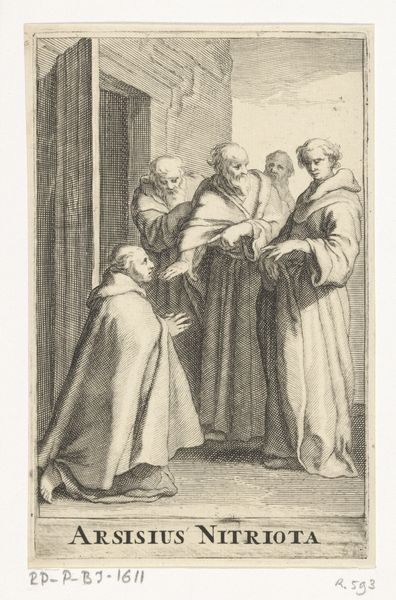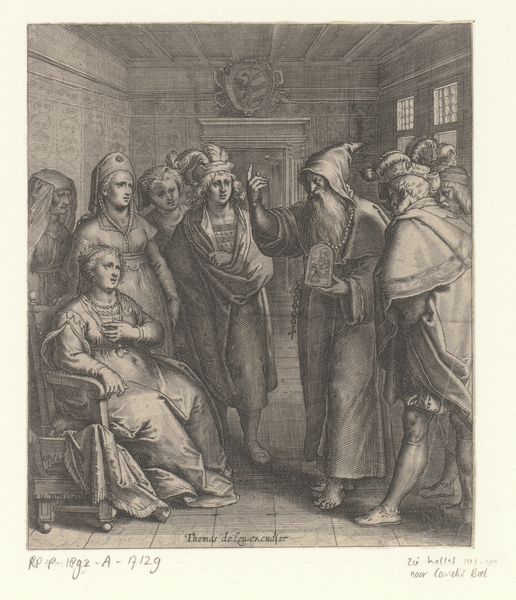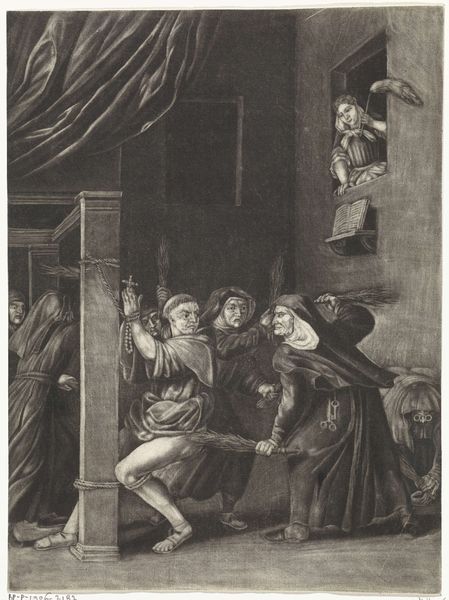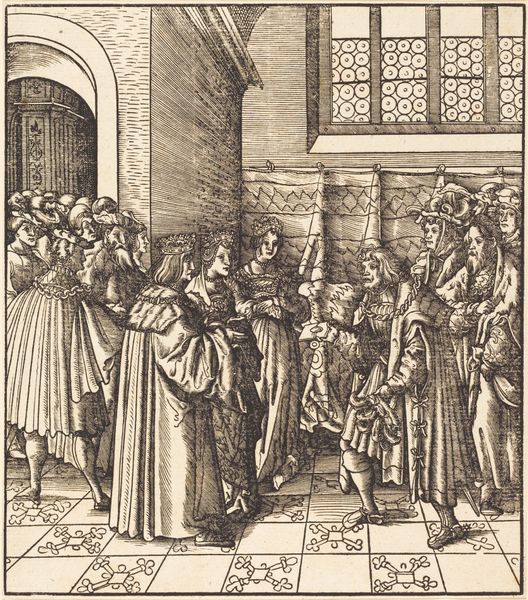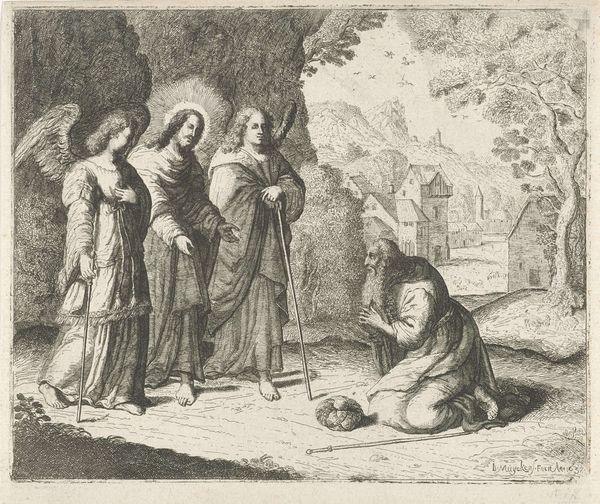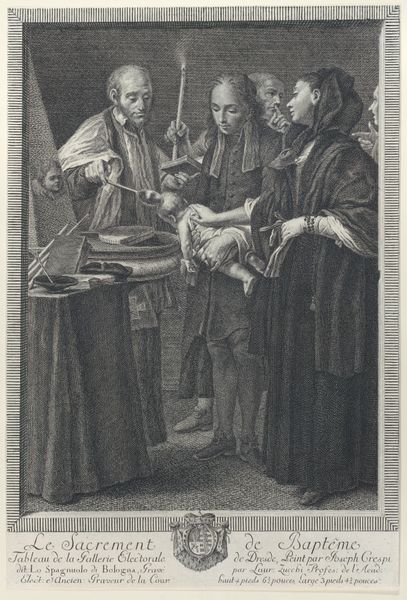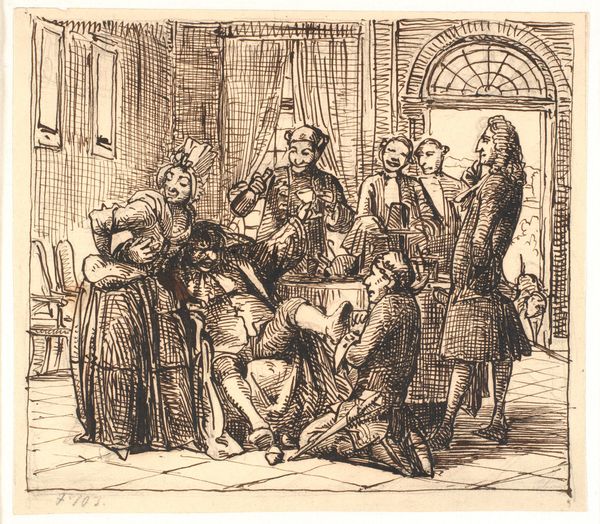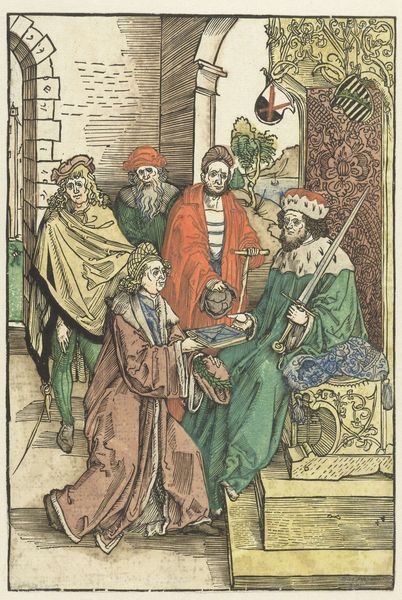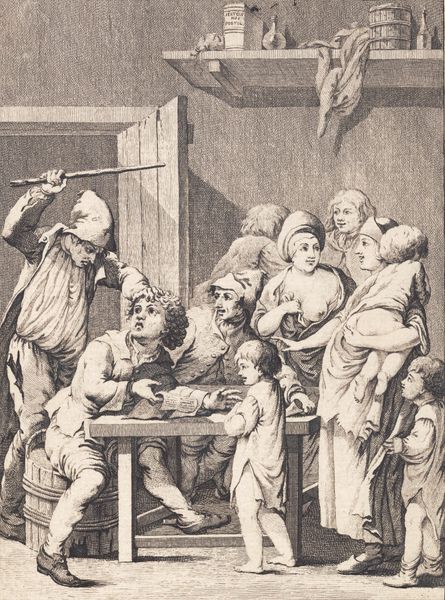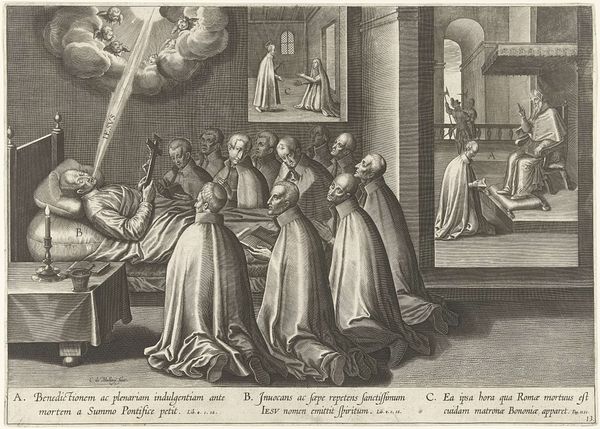
painting, oil-paint
#
portrait
#
venetian-painting
#
narrative-art
#
baroque
#
painting
#
oil-paint
#
figuration
#
genre-painting
Copyright: Public domain
Pietro Longhi painted 'The Perfume Seller' in 18th-century Venice, a city celebrated for its masked carnivals and complex social hierarchies. Here, Longhi captures a scene brimming with the performative aspects of Venetian life. The masks, worn by the figures, act as social equalizers, allowing for interactions across class lines, yet simultaneously obscuring individual identities. We see a woman, presumably of lower social standing, offering her wares to two masked figures whose elaborate dress suggests wealth. The exchange hints at the economic realities underlying the city's glamorous facade. Longhi’s painting both reflects and gently critiques the social customs of his time. The presence of the small dog, a common symbol of wealth, further underscores the themes of status and display. In Longhi’s Venice, seeing and being seen were intertwined, and the canvas reveals the delicate balance between genuine interaction and social performance.
Comments
No comments
Be the first to comment and join the conversation on the ultimate creative platform.
